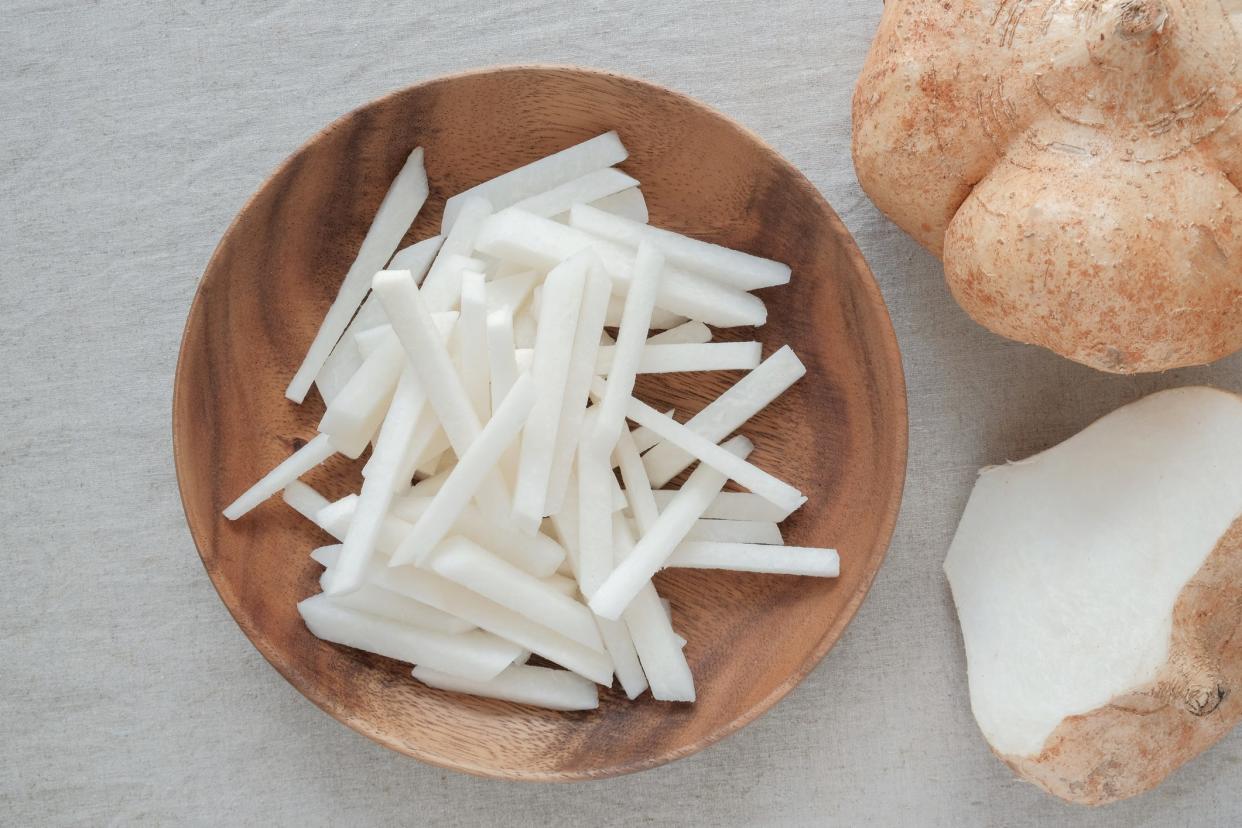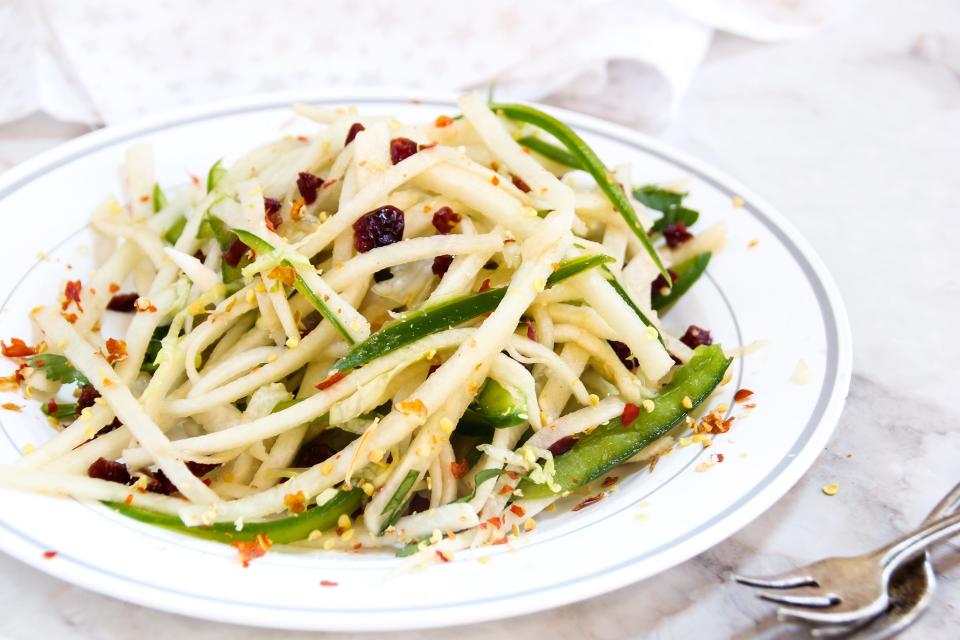Cyclists Looking to Add More Vitamin C to Their Diet Should Consider Jicama

If you’re like most people, you’re a creature of habit when it comes to a trip through the supermarket produce aisles. Broccoli, spinach, and carrots are all familiar options (even if they feel somewhat boring). But for the sake of side-stepping food burnout and to ramp up the nutrition of your diet, it’s good to sometimes throw caution to the wind and drop something new and exciting into your cart. One option: the oft-overlooked vegetable, jicama.
What is jicama?
Jicama (pronounced HEE-kah-ma) is sometimes referred to as yam bean and is an edible globe-shaped root vegetable that is part of the legume family and native to Central America. There, it is often sold by street vendors and seasoned with lime juice and chili powder as a refreshing snack. In North America, however, the tuber is less popular and can leave many scratching their heads at what to make of it. After all, it looks like a deflated beach ball with bark-like skin. But for both taste and nutrition, jicama has a lot going for it.
What are jicama’s nutrition benefits?
OK, so jicama might not win any veggie beauty pageants or have the same cache of nutrients as does kale, but it definitely has some nutritional highlights. Namely, it’s an excellent source of vitamin C. “Vitamin C is a powerful antioxidant that works to limit oxidative stress, strengthen the immune system, and promote collagen production that assists with joint and ligament health,” says sports dietitian and competitive cyclist Lori Nedescu, founder of Hungry for Results.
Research also suggests that higher intakes of vitamin C could help keep blood pressure numbers from boiling over. What’s more, when researchers in Greece screened male athletes, they found that those with the lowest blood concentrations of vitamin C performed the worst during a physical exercise test and had higher signs of oxidative stress, a tip-off for weakened antioxidant defenses. On the other hand, the athletes with more vitamin C in their systems had higher VO2 max values that can translate into better workout performance.
And we would be remiss if we didn’t highlight the impressive amounts of dietary fiber that jicama brings to the table—about 6 grams in a one-cup serving. This is an important perk considering that eating more fiber is a key component to a long, healthy life. According to a recent analysis of studies conducted over the past 40 years, high-fiber eaters—those pushing past the 30 grams a day mark—have a 15 to 30 percent lower risk for some of today’s biggest killers including heart attack, stroke, type 2 diabetes, and colorectal cancer compared to people who eat much less fiber.
“The bulkiness created by fiber slows digestion, meaning the rate at which sugar is released into the blood stream is slowed, which limits insulin spikes,” Nedescu explains. “Controlling insulin and blood glucose levels is a huge part of long-term health and better aging in many aspects including reducing the chances of developing diseases like diabetes.”
A special type of fiber in jicama called inulin acts as a prebiotic, meaning that the beneficial critters in your digestive tract view it like candy, something they love to nosh on and in doing so, can flourish to help bolster your digestive and immune health.
If you spend a lot of time riding in the summer heat, it’s also worth noting that jicama is made up of about 85 percent water. “Fruits and vegetables like jicama with a high water content allow us to better hydrate at each meal while promoting improved digestion,” Nedescu says.
Yeah, but how does jicama taste?
Rest assured that jicama’s tough brown skin gives way to a softer white flesh on the inside that manages to be juicy and crispy at once. It would be fair to say that its flavor is like a cross between an apple and a water chestnut. Taste is subjective, but we think a few bites will surely leave you thinking out loud: “Why haven’t I been eating this all along?”

How do you eat jicama?
Look for jicama year-round in the produce section of some supermarkets and definitely in Latin food markets. Many Asian grocers also stock jicama. You want to buy firm, dry roots. The skin should not appear shriveled, bruised, or blemished. A healthy-looking jicama should keep in your fridge for at least two weeks. It’s best to peel away the tough and fibrous skin with a sharp chef’s knife before eating.
Jicama’s mild flavor and ultra-satisfying crunch lend it to a myriad of uses in the kitchen. Slices of raw jicama take any dip up a notch in a way that other crudités can’t. But don’t stop at a crudité platter. Slice raw jicama into batons for use in sandwich wraps, salads, spring rolls, and stir-fries—its flesh remains crispy when cooked briefly. Shredded, it can wake-up slaws, tacos, and burgers. Dice it to add it to salsas, guacamole, hashes, and even fruit salads. And for the ultimate snacking satisfaction, Google “jicama chips.”
You Might Also Like

